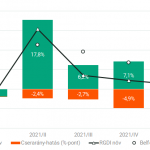NBER Working Paper No. 21647
Issued in October 2015
NBER Program(s): DAE
Mortality was extremely high in the industrial cities of the 19th century, but little is known about the role played by pollution in generating this pattern, due largely to a lack of direct pollution measures. I overcome this problem by combining data on the local composition of industries in Britain with information on the intensity with which industries used polluting inputs. Using this new measure, I show that pollution had a strong impact on mortality as far back as the 1850s. Industrial pollution explains 30-40% of the relationship between mortality and population density in 1851-60, and nearly 60% of this relationship in 1900. Growing industrial coal use from 1851-1900 reduced life expectancy by at least 0.57 years. A back-of-the envelope estimate suggests that the value of this loss of life, expressed as a one-time cost, was equal to at least 0.33-1.00 of annual GDP in 1900. Overall, these results show that industrial pollution was a major cause of mortality in the 19th century, particularly in urban areas, and that industrial growth during this period came at a substantial cost to health. This paper is available as PDF (6190 K).
Nem található esemény a közeljövőben.
A KRTK Közgazdaság-tudományi Intézet teljesítményéről A KRTK KTI a RePEc/IDEAS rangsorában, amely a világ közgazdaság-tudományi tanszékeit és intézeteit rangsorolja publikációs teljesítményük alapján, a legjobb ... Read More »

Tisztelt Kollégák! Tudományos kutatóként, intézeti vezetőként egész életünkben a kutatói szabadság és felelősség elve vezetett bennünket. Meggyőződésünk, hogy a tudomány csak akkor érhet el ... Read More »

Srí Lanka: a 2022-es gazdasági válság leckéje – A. Krueger Lessons from Sri Lanka Anne O. Krueger Jul 25, 2022 – Project Syndicate ... Read More »

A permanens válság korában élünk – J. Meadway We’re living in an age of permanent crisis – let’s stop planning for a ‘return ... Read More »

A 2021 végén, illetve 2022 elején tapaszalt 6, illetve 7%-os cserearányromlás brutális reáljövedelem-kivonást jelentett a magyar gazdaságból. A külső egyensúly alakulásával foglalkozó elemzések többnyire ... Read More »
